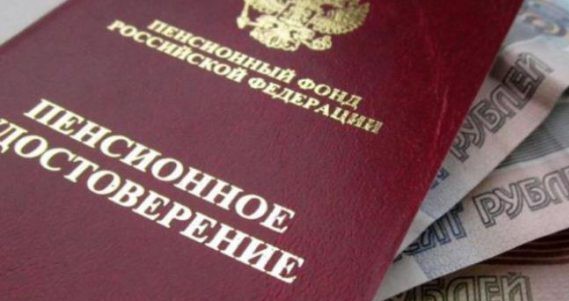By law, all citizens, foreigners and stateless persons who are officially employed are included in the pension insurance system. Making payments guarantees the material support of these persons in old age.
Until 2015, contributions accounted for 22% of the monthly salary, of which 16% were used to pay the insurance part, and 6% to the funded part. In connection with the reform carried out after 2015, future pensioners were divided into 2 groups, one of which formed the pension solely from the insurance part, and the other from the insurance and funded ones (by concluding an agreement with an NPF or a state management company).
About why it was required to carry out pension reform and introduce an individual pension coefficient (IPC), what it is in general, what features it has, are described in the article.
Why reform is needed

Individual pension capital is understood as the accumulation of working citizens with whom it is planned to replace the insurance part. Authorities explain that updates were required due to the fact that after freezing a funded pension, revenues to the FIU decreased. At the same time, the period is approaching when one-time payments will need to be paid. The Ministry of Labor predicts that at least 9 million people should receive this payment from 2022 to 2031.
The essence of the reform is that a working person transfers funds to his personal account. At the same time, it is planned to include citizens in the new system on a voluntary basis in the next 6 years. The project includes the right to:
- refusal of pension savings;
- determination of the amount of deductions;
- vacation up to 5 years with the possibility of renewal.
In this case, deductions will be paid in the amount of 22% of official earnings, as before.
Currently, the insurance and funded parts have become separate types of pensions, which are regulated by the following laws:
- On funded pension No. 424-ФЗ.
- About insurance pension No. 400-ФЗ.
The concept of IPC
IPC is a consequence of changes in the rules that form the ways of providing future retirees. Previously, the calculation was carried out on the basis of pension capital, but now it depends on personal indicators.
IPC is a parameter for evaluating human labor for each year worked, which is expressed in points. At the same time, indicators for each year of work are summarized. Separately, the calculation is carried out during the work until 2015.

PKI Size
The amount of accruals depends on the number of points, as well as the cost of the increasing coefficient. In 2018, the maximum number of points that can be scored is 8.70. In accordance with the laws in force, this number is increasing every year, and starting from 2021, it will be equal to 10. The IPC coefficient accrued for the year is the ratio of material resources on the accounts of FIUs to mandatory payments that are charged according to the laws.
What determines the size of the IPC
The value of the IPC (i.e., retirement point) is set by the state every year in February and April. Due to periodic recalculation, the amount is adjusted relative to inflation and changes in prices for basic products. Pension benefits consist of:
- fixed part;
- insurance payments.
In 2018, the cost of one retirement point amounted to 81.49 rubles, and the fixed part - 4 982.90 rubles. Thus, the final amount of payment directly depends on the size of wages. The higher the income, the greater the deductions. In addition, the value of the IPC depends on the length of service and the value of the point.And the last parameter is directly related to the inflation rate.

Boost factor
The law may provide for preferences, due to which the amount of regular payments increases. For example, an increased coefficient is used in calculating survivor pensions. This is done in the following cases:
- upon the first appointment of an insurance pension;
- in case of refusal from it and subsequent restoration of payments;
- when assigning payments to a person who did not apply for their registration or refused to receive it.
Coefficient levels
The law on insurance pensions provides for an annual increase in the size of the IPC. Pension, depending on this, is calculated on the basis of the following indicators of the maximum number of the coefficient:
- in 2017 - 8.26;
- in 2018 - 8.70;
- in 2019 - 9.13;
- in 2021 onwards - 10.
If the calculation shows an indicator above the established, then only the maximum IPC will be applied. This will happen in the following case. If in 2017 the coefficient is 8.70, then only 8.26 will be applied. At the same time, the same IPC in the amount of 8.70 in 2018 will be fully counted.
Advantages and disadvantages

The attitude to the new principle of settlements among citizens is ambiguous. The system has both advantages and disadvantages. The benefits of pension reform include the following:
- reduction of the financial burden on the budget;
- employees' interest in a longer length of service;
- prompt response to inflation and prices.
The disadvantages of the system are as follows:
- payment of the minimum pension to citizens with low wages;
- confusion in the formulas - to figure out the size of the future pension is very difficult for a person from the outside.
In addition, the rejection of the system is caused by an increase in the length of service from 5 to 15 years. This innovation is also being implemented gradually. The introduction of the need for a mandatory experience of 15 years is planned by 2024.
Payment
Calculation of IPC is carried out according to a special formula. To do this, it is necessary to divide the insurance part by the amount of the maximum obligatory payment established by the state, and then multiply the result by 10.
It is convenient to understand this using the following example: in 2016, 80 thousand rubles were transferred per employee. in the FIU. The maximum required payment is 187.2. Dividing 80 by 187.2, you get 0.43. This indicator is multiplied by 10. As a result, the IPC will be equal to 4.3.
When calculating, the size of the insurance rate is taken into account, therefore, even with the same salary, the coefficients can be different. For example, with a salary of 20 thousand rubles. and at a rate of 16%, the coefficient will be equal to 2.05, while at a rate of 10% it will become only 1.28.
Pension PKI can be calculated not only manually. Knowing the basic data, they can be indicated in the online calculator on the official website of the FIU. Then the automatic calculation will be performed very quickly. It should be understood that the values are approximate, since many factors that are taken into account in this case cannot always be provided for by a calculator.
You can find out the exact calculation when contacting the Pension Fund branch. But in this case, the provided calculations will have only preliminary significance.
Retirement Points
The formation of the value of a pension point is based on indexation data. In this regard, the amount increases annually. For example, in 2017 amounted to 74.27 rubles. (and by the end of the year 78.58 rubles.) the amount of the IPC, the pension in 2016 increased by 4%. In 2018, the retirement score became 81.49 rubles, and the pension in 2017 increased by 5.4%.

Settlement in different periods
Calculating pension payments for people of middle and pre-retirement age is not so simple. Over the period of their labor activity, laws have been amended more than once or completely lost their force due to the introduction of new ones. Therefore, the calculation is carried out in different ways. In particular, this applies to the following periods:
- until 2002;
- from 2002 to 2014;
- from 2014 to the present.
The most difficult calculations have to be done with a working period until 2002.
- At the same time, the pensioner can choose the period for which the pension is calculated (for 2000 and 2001, or for 5 other consecutive years throughout the entire activity until 2002).
- Further, if the man’s experience was less than 25 years, then the coefficient will be equal to 0.55, and if more, then you need to add a period of more than 25 years and divide it by 100. For example: 0.55 + (28 - 25) / 100. The same calculations are made for women, but minus 5 years.
- After that, the average wage is taken into account. Data is taken from special tables. You can get your IPC by dividing your salary by the national average.
- To obtain a calculated pension, you need to know the coefficient of wages and length of service.
- Then the valorization is calculated if there was an experience before 1991. If there is one, a surcharge is established.
- Payout is calculated as of 2015. To do this, the resulting amount must be multiplied by a factor of 5.6148.
- At the final stage, the determination of the IPC. This is done by dividing by 64.1.

When determining the coefficient from 2002 to 2014, only pension capital, consisting of the relevant contributions, is taken into account. Other factors do not affect the amount. First, the IPC is determined in rubles, and after that it is converted into points. For this purpose, the average monthly pension should be determined. Then the capital should be divided by the period of survival (in months), and after that - by 64.1.
The calculation for work after 2015 is based on the paid insurance premiums. As indicated above, the coefficient for each year is calculated by dividing the amount of contributions by the standard amount and multiplying by 10. The standard size or maximum wage with which contributions are taken into account is:
- in 2015 - 113 760 rubles;
- in 2016 - 127 360 rubles;
- in 2017 - 140 160 rubles.
Example
It is best to study the calculation by example. The experience of a man until 2002 was 28 years, of which he worked for 20 years until 1991. It is profitable to consider the salary for 2000 and 2001. Then it amounted to 1.7 thousand rubles. with an average earnings of 1,500 rubles.
At the same time, calculations of the pension for labor activity until 2002 showed the following values:
- coefficient of experience - 0.58;
- salary ratio - 1.14;
- the amount of payment for this period, taking into account the valorization, is 4,780 rubles;
- IPC for 2002 is 74.57.
In the period from 2002 to 2014, the amount of the pension capital of men amounted to 500 thousand rubles. Then the insurance pension is calculated as follows: 500 000/228 (survival period) = 2 191.98 rubles. In this case, an individual coefficient can be obtained by performing the calculation: 2 192.98 / 64.1 = 34.21.
The man retired in 2017. So, another period, from 2015 to 2017, is calculated separately. For example, each year the amount of contributions was 50,000 rubles. Based on this, the following coefficients are obtained:
- for 2015, 50 thousand should be divided by 113,760 and multiplied by 10 (it will turn out 4.4);
- for 2016, 50 thousand should be divided by 127 360 and multiplied by 10 (it will be 3.93);
- for 2017, you need to divide 50 thousand by 140 160 and multiply by 10 (you get 3.57).
Adding these coefficients, we obtain a coefficient equal to 11.9.
There are also socially significant periods during which a person does not work, but an individual pension coefficient is considered. What is it for men? As a rule, this is a service in the armed forces. In women, the time of birth and care is taken into account. Suppose that a man served 3 years, then his IPC for this period will be 5.4.
It remains to add up all the coefficients obtained to get the final number of pension points. The calculations will be as follows: 74.57 + 34.21 + 11.9 + 5.4 = 126.08. It is this number that must be multiplied by the cost of the coefficient and added to the fixed part of the pension.

Conclusion
So, now it’s clear what the abbreviation IPK means. The value of this individual pension coefficient is large, and understanding it will not be difficult. The situation in calculating this indicator is much more complicated, especially when it is necessary to take into account different periods.
